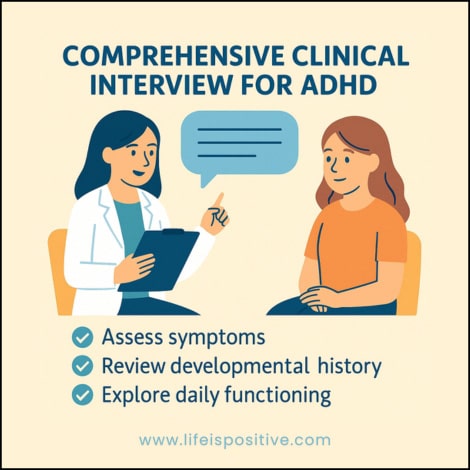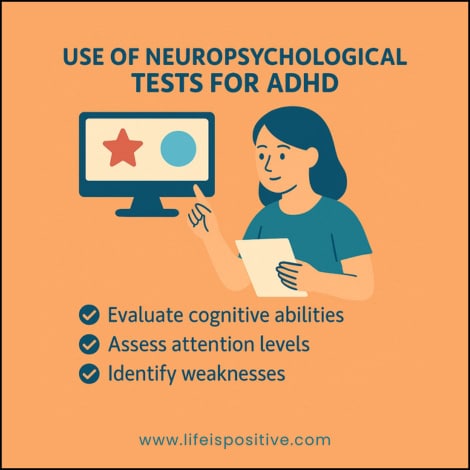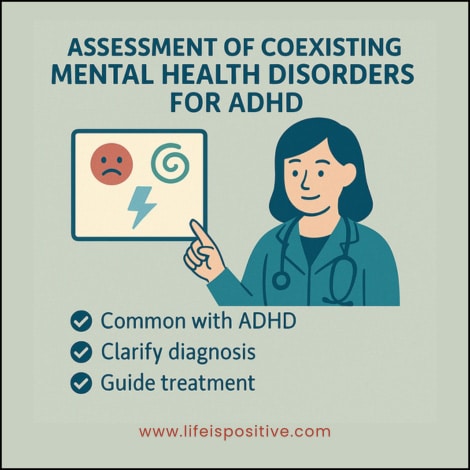|
Getting your Trinity Audio player ready...
|
Ever catch yourself constantly zoning out in meetings, forgetting where you left your keys (again), or feeling like your brain’s a browser with 37 tabs open? If you’ve been wondering about diagnosing ADHD in adults, you’re definitely not the only one. A lot of adults start to notice patterns—like restlessness, impulsivity, or chronic distraction—and begin to question what’s really going on.
The good news? Getting clarity is totally possible. In this guide, we’re breaking down eight solid ways doctors and professionals go about diagnosing ADHD in adults—so you can better understand your mind and take steps that actually help.
1. Comprehensive Clinical Interview
A deep-dive clinical interview is often the first and most important step in diagnosing ADHD in adults. Think of it as your story session—only this time, your healthcare provider is paying close attention to the details that matter.
They’ll ask about your medical background, mental health history, daily routines, and even how things were for you as a kid. Why? Because ADHD doesn’t suddenly appear in adulthood—it usually starts early. This conversation helps spot consistent patterns and rule out other possible causes, like anxiety or depression.
2. Standardized Behavior Rating Scales
When it comes to diagnosing ADHD in adults, questionnaires like the Adult ADHD Self-Report Scale (ASRS) and the Wender Utah Rating Scale (WURS) are go-to tools in the toolbox. Think of them as symptom scorecards—they help paint a clearer picture of what’s really going on.
These surveys dive into how often certain behaviors pop up and how much they interfere with daily life. While they’re not a diagnosis by themselves, they work hand-in-hand with clinical interviews to give healthcare providers a fuller, more accurate view of your experience.
Read: VR Games are a Game-Changer in Diagnosing ADHD
3. Observation of Symptoms Across Multiple Settings
For ADHD to be diagnosed in adults, it’s not just about how you act at work or home—it’s about patterns that show up in multiple areas of life. That’s why professionals look for symptoms popping up in at least two settings, like your job, your relationships, or your daily responsibilities.
This helps confirm that it’s not just a situational thing (like a stressful job), but something more consistent. It’s a key part of making sure the diagnosis is accurate and meaningful.
4. Use of Neuropsychological Tests
Neuropsychological assessments are like giving your brain a check-up with a magnifying glass. These tests dig into how well you focus, remember things, and manage tasks—basically, how your mind handles the daily mental juggling act.
Tools like the Continuous Performance Test (CPT) and the Test of Variables of Attention (TOVA) are designed to catch attention slips and impulsive moments that might point to ADHD. They’re not the whole diagnosis, but they definitely help fill in some important pieces of the puzzle.
5. Collateral Information from Family or Close Contacts
Sometimes the people closest to us notice things we might miss—or don’t want to admit. That’s why input from family, friends, or a partner can be super helpful when diagnosing ADHD in adults.
They can share how your behaviors show up at home, in social settings, or over time. These outside perspectives help paint a fuller picture and confirm whether those ADHD symptoms are consistent and showing up across the board, not just in isolated moments.
Read: How to Know If You Have ADHD
6. Medical Examination to Rule Out Other Conditions
Before jumping to an ADHD diagnosis, a solid rule-out game is key. That’s where a physical exam and a deep dive into your medical history come in. Things like thyroid issues, vitamin deficiencies, or even sleep apnea can look a lot like ADHD on the surface—foggy brain, low energy, scattered focus.
So your healthcare provider will check for these underlying conditions first to make sure those attention struggles aren’t coming from something else. It’s a smart move for an accurate, informed diagnosis.
7. Assessment of Coexisting Mental Health Disorders
ADHD rarely travels solo. It often brings along some uninvited guests, like anxiety, depression, or learning challenges. That’s why part of diagnosing ADHD in adults includes checking for these mental health tagalongs.
Comorbidities can sometimes blur the picture, making symptoms more intense or harder to untangle. By spotting what else might be going on, your provider can create a treatment plan that actually fits your full mental health landscape, not just part of it.
8. Review of Developmental and Educational History
Looking back at your old report cards and childhood milestones might not seem like a diagnostic tool, but it totally is. When diagnosing ADHD in adults, doctors often dig into their school history and development.
Struggles like low grades, frequent teacher notes, or behavior challenges can shine a light on attention issues that didn’t just pop up in adulthood. It’s all about connecting the dots to see if ADHD has been quietly running in the background for years.
Final Thoughts: Diagnosing ADHD in Adults
Figuring out whether you have ADHD as an adult isn’t a one-size-fits-all deal—it’s a layered process that takes time, care, and a trained professional who knows what to look for.
From in-depth chats about your past and present, to checklists and tests, to hearing from the people who know you best, diagnosing ADHD in adults is about putting the whole picture together.
The good news? Once you’ve got answers, you can build a plan that actually works for your brain. So if that inner voice is nudging you to explore what’s really going on, listen to it. T
alk to a qualified provider, ask the hard questions, and give yourself the gift of clarity. Your focus, your energy, your peace of mind—it’s all worth it.
For more empowering content, connect with our vibrant community here ➡️ Social Media.



